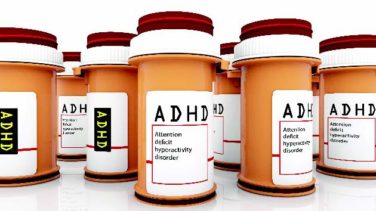FROM JAMA NEUROLOGY
Neurological disease related to pediatric enterovirus 71 infection was fatal in 7% of cases, and 10% of survivors had persistent brainstem or motor dysfunction 12 months later, investigators reported online Jan. 19 in JAMA Neurology.
The findings underscore the potentially grave consequences of EV71, which “may be considered the new polio” because it causes long-term focal paresis by damaging brainstem and spinal cord grey matter, said Dr. Hooi-Ling Teoh at Sydney Children’s Hospital and her associates. Clinicians can use the World Health Organization guidelines to quickly identify cases and determine which patients need prompt supportive care and immunotherapy during outbreaks, they added.
Enterovirus 71 usually causes uncomplicated hand-foot-and-mouth disease, but patients can develop aseptic meningitis, acute flaccid paralysis, and fatal brainstem encephalitis. This prospective study included 61 children with EV71-related neurologic disease treated at two urban Australian hospitals during an EV71 outbreak in 2013. The 57 survivors were 3 months to 5 years old (median age, 1.5 years) and almost two-thirds were male. Common initial symptoms included fever (100% of cases), myoclonic jerks (86%), ataxia (54%), and vomiting (54%), the researchers said (JAMA Neurol. 2016 Jan 19. doi: 10.1001/jamaneurol.2015.4388).
The most common neurologic diagnoses included encephalomyelitis (40% of patients), brainstem encephalitis (35%), encephalitis (11%), acute flaccid paralysis (7%), and neurogenic pulmonary edema (7%), a particularly severe form of EV71 disease. Characteristic MRI signs included increased T2-weighted signal in the dorsal pons and spinal cord, but pulmonary edema also was associated with dorsal brainstem restricted diffusion (odds ratio, 2.0; 95% confidence interval, 1-4; P = .001). Brainstem or motor dysfunction resolved in 77% of cases by 2 months and in 90% of cases at 12 months. The most common long-term clinical and functional problem was focal paresis, which persisted in five of six patients at 12 months.
Notably, the odds of persistent motor dysfunction were about 15 times higher when patients presented with acute flaccid paralysis or pulmonary edema than when they had other syndromes (OR, 15; 95% CI, 3-79; P < .001). Also, EV RNA was identified far more often from fecal samples and rectal and throat swabs than from cerebrospinal fluid, Dr. Teoh and associates reported.
The research was supported by the Thyne Reid Foundation, National Health and Medical Research Council of Australia, Royal Australasian College of Physicians Paediatrics & Child Health Division, and by a Norah Theresa Hayes-Ratcliffe Paediatric Infectious Diseases fellowship award. The investigators had no disclosures.





